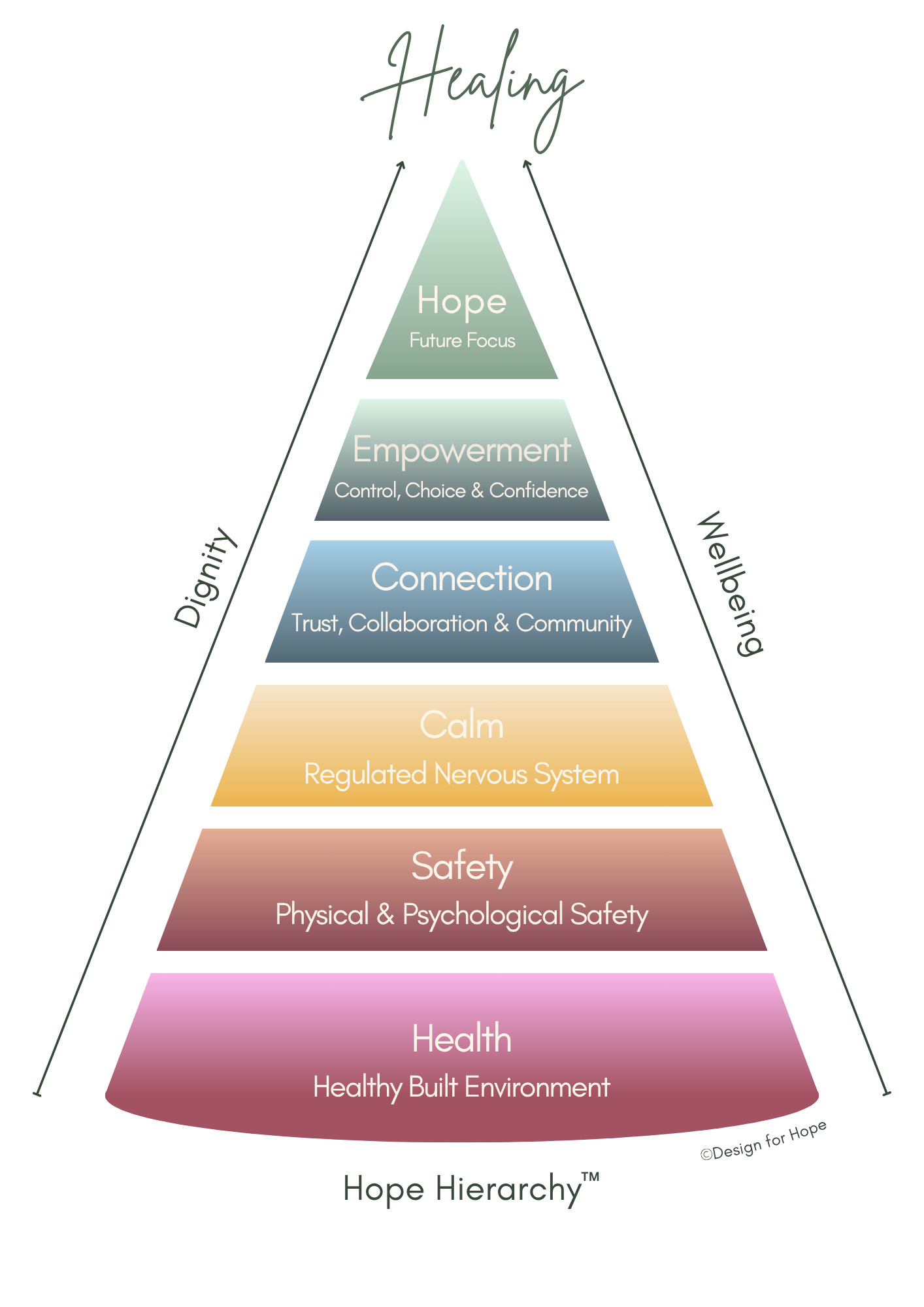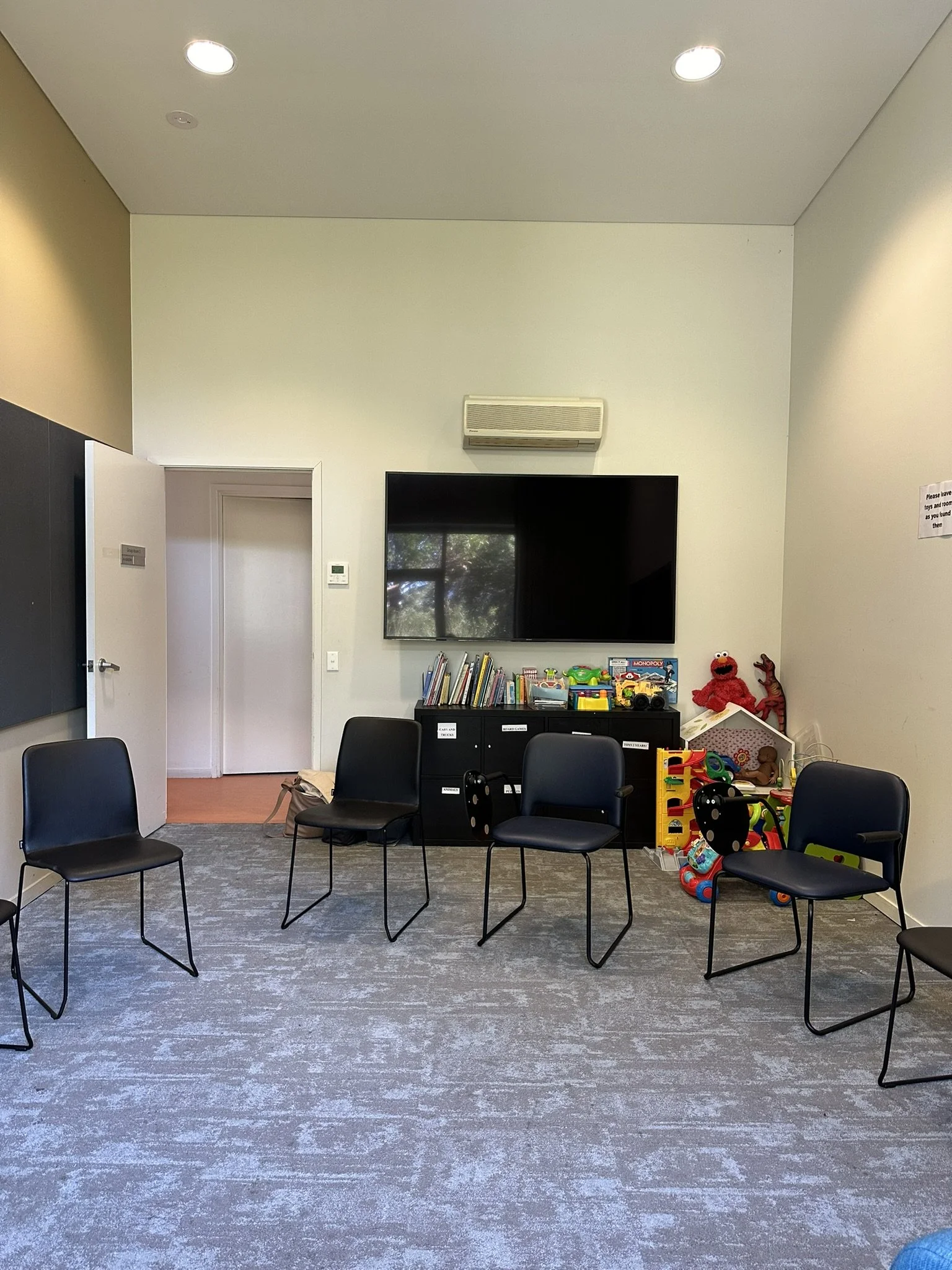When the Space Doesn’t Match the Care: Uncovering Hidden Barriers to Recovery
Key points
A space can feel wrong even when it looks right: Subtle environmental cues can affect psychological safety, nervous system regulation and a sense of empowerment, especially in trauma recovery settings.
Asking the right questions helps make the invisible visible: A science-backed framework such as the Hope Hierarchy™, can guide you to uncover hidden environmental stressors that may be quietly undermining therapeutic outcomes.
Design can be a strategic tool for healing: Insights from a TID Audit inform evidence-based design priorities that align the physical environment with your model of care and support meaningful recovery outcomes.
You know when something feels off in a space, even if you can’t quite put your finger on why. You might feel unsettled, uncomfortable, or less inclined to connect with others. And yet, nothing looks obviously wrong. Environmental signals are often invisible or misunderstood. And even well-meaning spaces can unintentionally undermine recovery.
In environments designed for healing, what’s visible on the surface rarely tells the full story. A space might look clean, safe and even professionally designed, yet still evoke stress and undermine healing. To truly understand how a space supports or hinders recovery, we need to move beyond appearances. The best way I have found to do this is to ask the right questions.
When I consult with the people who use a space, I listen closely for how the environment is experienced - emotionally, physically, and culturally. These conversations surface things that can’t be seen on a floorplan: stressors that drain energy, features that undermine trust, and small discomforts that quietly erode wellbeing. We call this process the Trauma-Informed Design (TID) Audit.
When Design Falls Out of Step with Care
Even in organisations deeply committed to trauma recovery, I’ve found that the physical environment is often out of step with the care being delivered. This is rarely due to negligence - rather, the true impact of a space is hard to assess without the right lens. Clinical models evolve, programs are refined, and services adapt, but physical spaces often remain static.
This creates a disconnect between therapeutic intent and the physical environment. When the design of a space is misaligned with the model of care, it quietly works against it. Our audit process identifies these subtle misalignments, revealing where the environment may be sending contradictory signals. In trauma recovery, these signals are particularly important.
A Diagnostic Lens: The Hope Hierarchy™
You can learn more about the Hope Hierarchy™ here
To make the invisible visible, we use the Hope Hierarchy™, a trauma-informed diagnostic lens grounded in neuroscience and environmental psychology. It forms the backbone of the TID Audit, guiding how we assess whether a space is supporting the layered journey of recovery.
Each level of the hierarchy prompts us to look for specific signals and stressors, so we can identify what’s helping and what’s hindering the healing process. Some are physiological, like poor lighting or air quality. Others are psychological, like spaces that feel shaming, institutional, or disempowering. The audit helps us uncover these patterns.
What emerges is often surprising. What looks right may feel wrong. What seems neutral might carry unspoken weight. Without a structured lens to reveal these hidden dynamics, environments risk unintentionally working against the recovery journey they aim to support.
Used consistently, the Hope Hierarchy™ lens enables organisations to align physical spaces with therapeutic intent and to do so in a way that’s replicable, measurable, and deeply attuned to recovery outcomes.
Beyond the Surface: Two Real-World Examples
The value of the audit lies in what it uncovers. Here are two examples that illustrate how even subtle environmental details can become barriers to recovery, and how the right insights can lead to powerful design shifts.
Case Study 1: Cultural Dissonance
A common barrier to psychological safety in trauma recovery spaces is cultural dissonance. Although therapeutic services recognise and respect the diverse cultural backgrounds of their clients, seemingly neutral design choices might still contradict the users’ identities or traditions. This can subtly erode trust and belonging.
A recent audit revealed that a well-meaning, professionally devised colour palette used in furniture and finishes was unintentionally undermining cultural connection for First Nations clients. While the tones were natural and earthy, they didn’t reflect the cultural associations of the local landscape.
As one participant explained:
“We can’t use those colours because we’re not from those areas. If we’re telling a story or painting, it’s got to represent us and where we’re from. So we can’t be using the desert colours because we’re not from there.”
What felt neutral to others was, to some clients, a subtle signal that this space wasn’t for them. This insight reframed the colour selection from an aesthetic choice to one of cultural congruence and respect. In response, we recommended a cooler, nature-based palette drawn from the nearby coastal landscape.
Case Study 2: Unintentional Trauma Triggers
In spaces designed for trauma recovery, even small details can carry unexpected emotional weight. Objects intended to be comforting or practical can, for some, become reminders of loss, shame, or fear. Without careful attention, practical design choices can inadvertently retrigger trauma.
During one audit, we observed that toys intended for use during family visits were stored in plain sight in a multi-purpose therapeutic room. While this arrangement made sense functionally, the visible presence of child-related items had an unintended emotional impact for clients experiencing grief or separation from their children.
For those individuals, the toys served as a painful reminder, making it harder to stay present during therapy sessions. This insight shaped the design priorities and strategies for the space, leading to changes that reduced emotional triggers and restored a sense of psychological safety.
Before
After
A Strategic Tool for Trauma-Informed Design
These examples are not intended as a checklist of what to avoid, but rather to demonstrate how every environment holds unique, often hidden, dynamics that shape how people feel, function, and heal within it.
Our audit reveals those dynamics. Our recommendations aren’t based on personal tastes or trends - they’re grounded in neuroscience, environmental psychology, and an evidence-based model of trauma recovery.
For organisations navigating complex challenges, limited budgets, and high-stakes care, we offer more than a design service. The result is a tailored, evidence-based set of design priorities that bring your physical environment into alignment with your therapeutic intent and create the conditions for healing.
If you’re ready to uncover the hidden signals in your space and create an environment that truly supports healing, let's begin the conversation with a call about your space.




